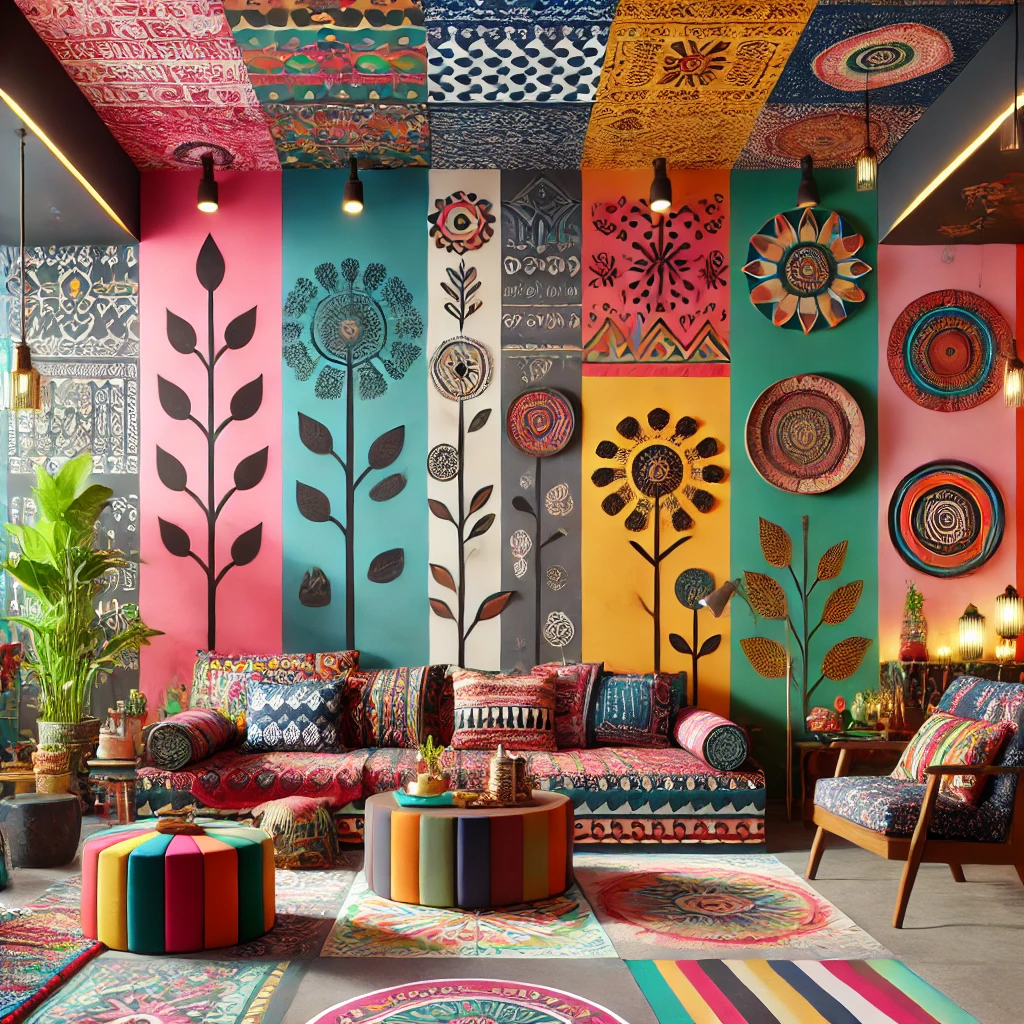Holi, the vibrant festival of colors, is more than just a celebration of spring and joy—it is a cultural phenomenon that deeply influences art, architecture, and design. From the colorful facades of Indian homes to the bold aesthetics of modern interiors, Holi’s essence can be seen in various aspects of architectural and design trends. This article explores how Holi’s traditions inspire the world of design, blending color, creativity, and cultural significance.
1. The Power of Color in Architecture
Color plays a vital role in architecture, and Holi’s spirit is reflected in the lively palettes used in Indian buildings. Traditional homes, particularly in Rajasthan, Gujarat, and Madhya Pradesh, feature bright hues that echo the festive energy of Holi. The psychological impact of colors—such as the warmth of red, the tranquility of blue, and the joy of yellow—adds to the aesthetic and emotional appeal of structures.
Examples:
- Havelis of Rajasthan: These historic mansions showcase intricate frescoes and bold color schemes reminiscent of Holi’s powdery hues.
- Blue City of Jodhpur: The entire city is bathed in shades of blue, much like Holi’s dynamic play of colors.

2. Holi-Inspired Interior Design Trends
Holi’s influence extends to interior spaces, encouraging designers to embrace vibrant, playful, and eclectic aesthetics. The festival’s love for colors is reflected in:
- Accent Walls & Color Blocking: Homes and commercial spaces incorporate strikingly painted walls that bring the festival’s joyful energy indoors.
- Bohemian & Eclectic Styles: Mismatched patterns, colorful textiles, and artisanal décor inspired by Holi create lively interiors.
- Traditional Indian Motifs: Wall murals, rangoli patterns, and folk art like Madhubani and Warli bring Holi’s cultural charm into modern interiors.

3. Sustainability and Natural Materials in Design
Holi is increasingly celebrated with organic colors made from flowers, herbs, and natural pigments. This eco-conscious approach has influenced sustainable architecture and design trends, such as:
- Natural Dyes & Pigments: Used in wall paints and furnishings to reduce environmental impact.
- Eco-Friendly Construction: Architects incorporate materials like mud, lime plaster, and terracotta, reminiscent of Holi’s organic celebration.
- Biophilic Design: Inspired by Holi’s connection with nature, green spaces, vertical gardens, and indoor plants are becoming integral to modern architecture.

4. Community Spaces and Interactive Designs
Holi is a festival of togetherness, fostering social interactions and communal joy. This philosophy has shaped urban spaces and public design by:
- Open Courtyards & Plazas: Indian homes traditionally have open courtyards, where Holi is celebrated with neighbors and family—these designs are making a comeback in modern housing.
- Interactive Public Art: Installations with color-changing facades, water fountains, and digital murals capture Holi’s dynamic spirit.
- Festival-Inspired Installations: Architects and designers create Holi-themed pop-up structures, art exhibits, and immersive experiences in urban spaces worldwide.

5. Global Influence: Holi’s Impact on Modern Design
Holi’s celebration of color and joy is not limited to India; it has inspired global design trends. Fashion designers, urban planners, and interior decorators worldwide have embraced Holi’s aesthetics, leading to:
- Color-Driven Branding: Companies use Holi-like gradients and vibrant branding to create engaging visual identities.
- Experiential Retail Spaces: Stores and cafes integrate bold colors, artistic graffiti, and interactive lighting inspired by Holi.
- Architectural Lighting & Projection Mapping: Public buildings and monuments are illuminated with Holi-like hues for special occasions.

Conclusion
Holi is more than a festival—it is a celebration of creativity and expression that deeply influences architecture and design. From vivid facades and eclectic interiors to sustainable materials and interactive spaces, Holi’s impact can be seen in traditional and contemporary designs worldwide. By embracing the festival’s spirit of color and joy, architects and designers continue to push the boundaries of artistic expression, creating spaces that reflect cultural heritage and modern innovation.












